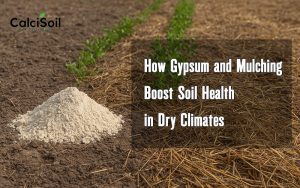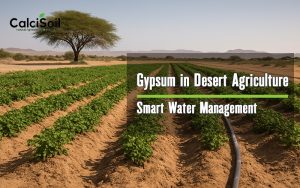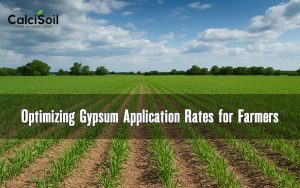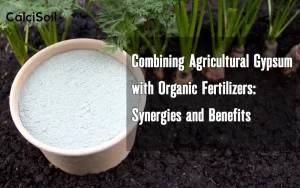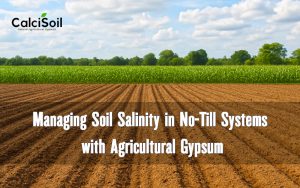
Amending saline and alkaline soils procedure
The main problem in amending alkaline soils is their degraded structure and toxicity resulting from the sodium presence. First step in amending such soils is to apply large amounts of calcium in form of small calcium sulfate particles. (several tons per hectare) to displace sodium by calcium. The smaller particles of calcium sulfate are. And the more uniformly they’re incorporated into the soil, the better and more rapidly sodium will be replaced by calcium. After soil’s amended by calcium sulfate application and its permeability increases, it’ll be leached as saline soil (it’ll be washed).
Here is a summary of the steps involved in the process:
1. Apply calcium: The first step in amending alkaline soils is to apply large amounts of calcium in the form of small calcium sulfate particles, such as gypsum. This helps to displace sodium by calcium and improve the soil structure. The smaller the particles of calcium sulfate and the more uniformly they’re incorporated into the soil, the better and more rapidly sodium will be replaced by calcium.
2. Improve soil permeability: Once the soil has been amended by calcium sulfate application, its permeability is likely to increase. This allows for leaching of the soil, which means that the excess salts and sodium can be washed out of the soil.
3. Monitor soil pH: As the soil is leached, it is important to monitor the soil pH and adjust it if necessary. This can be done by applying acidifying agents, such as sulfur, to lower the soil pH to a more neutral range.
4. Reapply amendments: Depending on the severity of the soil alkalinity and salinity, it may be necessary to reapply amendments, such as gypsum or other calcium sources, periodically to maintain soil structure and prevent sodium buildup.
Overall, amending saline and alkaline soils requires a multi-step process that involves the application of calcium sulfate to displace sodium, improving soil permeability, monitoring soil pH, and potentially reapplying amendments over time. This can help to improve soil structure and fertility, and promote healthy plant growth.
Soils are divided into the following grades based on their agricultural suitability:
- Grade zero: These soils are free of salt and do not limit plant growth
- Grade 1: Soil salt content affects sensitive plants but does not hamper growth of halophytic plants
- Grade 2: Soil salt content decreases normal growth of all plant species
- Grade 3: Soil salt content is high and only a few plant species (salt resistant plants ) are resistant to the salt content of such soils
Note: Soil electrical conductivity (EC), which is a function of soil salt content, is criterion used to determine soil grade. The Soil pH must also be measured when studying the saline and the alkaline soils. In the most soils with the pH values higher than grade 9 there is a large amount of exchangeable sodium.


